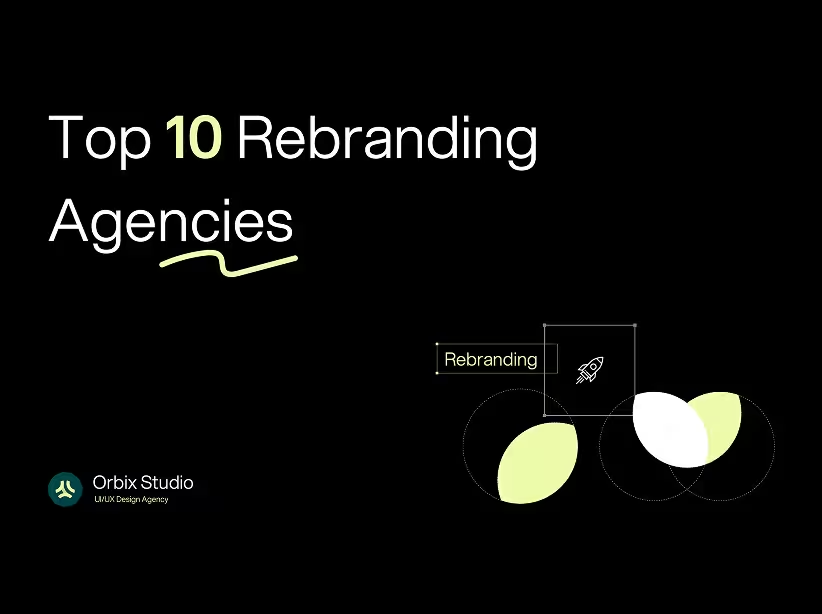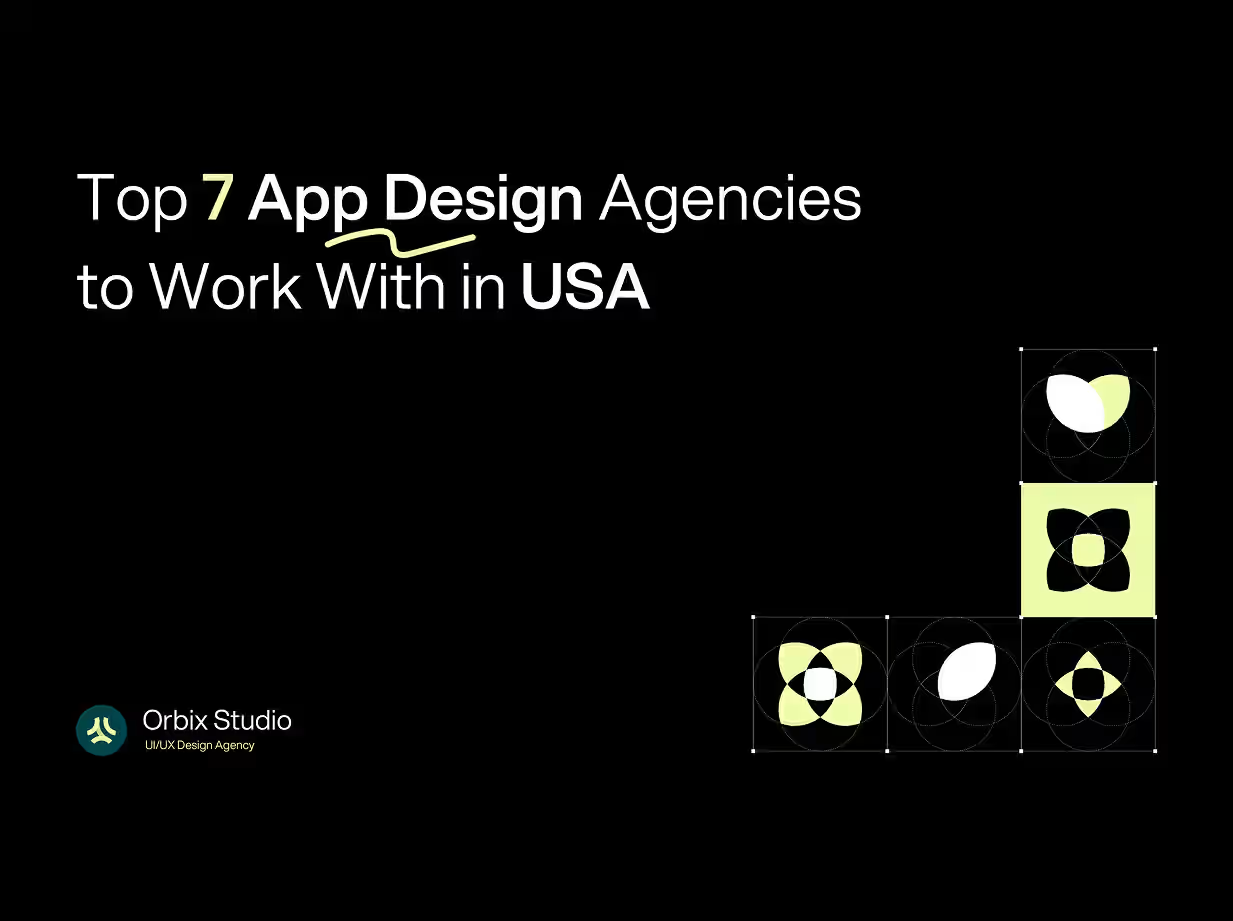Table of Contents

Mastering a successful UI/UX design process is vital to creating user-centered experiences that lead to better engagement and growth in the fast-paced environment of digital product development in 2025. Some projections anticipate the global UX market to hit $32.95 billion by 2030, which is part of the reason brands are emphasizing intuitive designs to remain competitive. It is reported that every $1 spent on UX, you can expect a $100 return—this is equivalent to a hefty return on investment (ROI) of 9,900% if a UI/UX design process is implemented successfully.
If you're a startup founder or a product manager inquiring what the 5 steps to a successful UI/UX design process are, you are in the right place! This complete guide will break these steps down step-by-step. We have taken these steps and worked with 120+ SaaS, fintech, and health-tech clients since 2018 at our AI-driven UI/UX design agency, Orbix Studio, which is based in New York City and operates globally from Dhaka. We will look at each phase, based on existing methodologies—like Design Thinking—while giving practical steps to take, best practices, and reported Windows of benefits that you can take and leverage as you implement a successful UI/UX design process for better user satisfaction and business results.
1. Empathize - Conduct Thorough User Research to Understand Needs
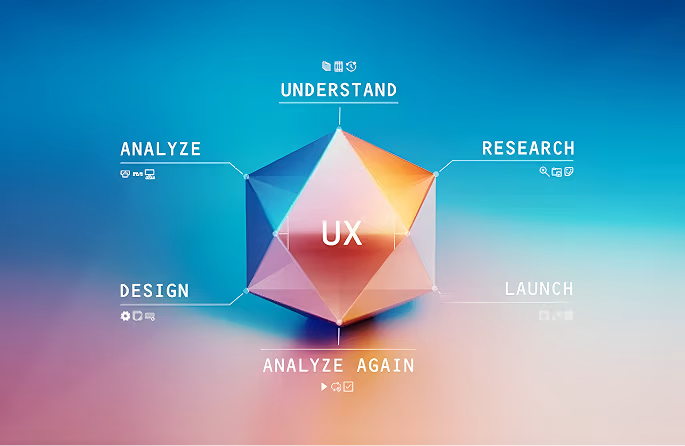
The foundation of any successful UI/UX design process begins with empathy—immersing yourself in the user's world through comprehensive research. This step involves gathering insights via interviews, surveys, and analytics to uncover pain points, behaviors, and motivations.
The foundation of any successful UI/UX design process begins with empathy—immersing yourself in the user's world through comprehensive research. This step involves gathering insights via interviews, surveys, and analytics to uncover pain points, behaviors, and motivations.
2. Define - Clarify the Problem and Set Clear Objectives

Once research is complete, the next key step in UI/UX design is to define the core problem and establish goals. Synthesize findings into a problem statement, such as "How might we streamline onboarding for novice users to reduce drop-off rates?"
This phase ensures alignment across teams and focuses efforts on user-centric solutions. Data indicates that well-defined problems lead to 400% higher conversion rates through targeted UX improvements. Tools like affinity diagrams and "How Might We" statements help refine scope.
Common pitfalls include vague definitions, which can inflate costs—fixing issues post-launch is 100 times more expensive than during design. By prioritizing this step, Orbix Studio has helped clients cut rework by 35%, ensuring a streamlined UI/UX design process.
3. Ideate - Generate Creative Ideas and Explore Solutions
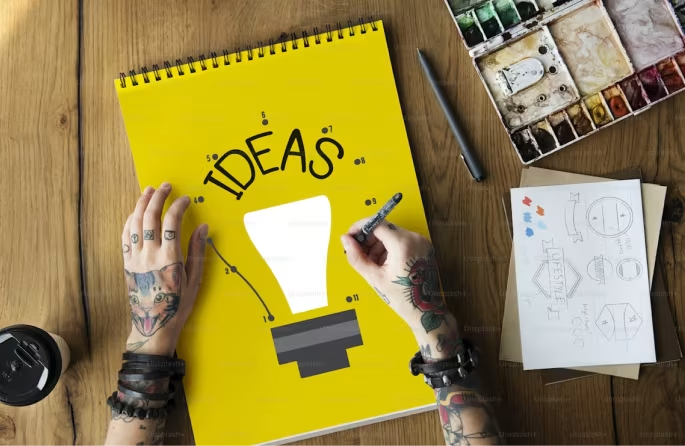
Ideation is where creativity flourishes in the UI/UX design process. Brainstorm diverse solutions without judgment, using techniques like mind mapping, sketching, and workshops to explore possibilities.
This step fosters innovation, with teams that ideate collaboratively seeing 20-30% better user engagement outcomes. Best practices include involving cross-functional teams and prioritizing ideas based on feasibility and impact.
In our experience at Orbix Studio, AI-assisted ideation tools accelerate this phase, enabling rapid concept generation that has boosted client innovation by 40%.
4. Prototype - Build Tangible Models to Visualize Designs
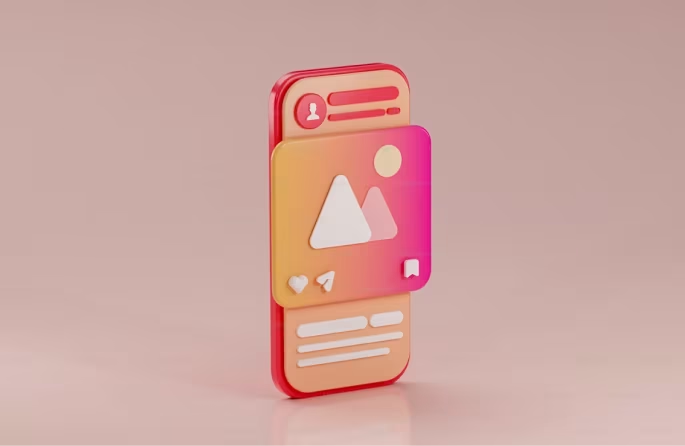
Prototyping transforms ideas into interactive models, from low-fidelity sketches to high-fidelity digital mocks. This key step in UI/UX design allows for quick iterations and early feedback.
Effective prototyping can reduce development time by 50% by catching flaws early. Best practices: Start low-fi (e.g., paper prototypes) for speed, then advance to tools like Figma for interactivity; ensure accessibility with high-contrast elements.
Orbix Studio excels here with AI-enhanced prototyping, delivering clickable prototypes that have slashed client testing cycles by 30%.
5. Test - Validate and Iterate Based on User Feedback

The final key step in a successful UI/UX design process is testing—gathering user feedback through usability sessions, A/B tests, and analytics to refine the design.Iterative testing improves satisfaction, with 88% of users less likely to return after a bad experience. Data shows that usability testing can boost conversions by 83% with just a 10% UX budget increase. Best practices: Test with diverse users, measure metrics like task completion rates, and iterate continuously.
At Orbix Studio, our AI-driven testing frameworks provide real-time insights, helping clients achieve up to 50% higher retention rates.
Why Following These 5 Key Steps in UI/UX Design Matters in 2025
Adopting a successful UI/UX design process not only enhances user loyalty but also propels business growth, with top performers seeing 211% better results than competitors. In a market where poor UX costs trillions annually, these steps ensure efficient, impactful designs.
At Orbix Studio, we integrate AI across all phases to deliver cutting-edge solutions, from Webflow development to motion design. Ready to optimize your UI/UX design process? Book a free consultation today: . Let's build experiences that resonate and convert!


